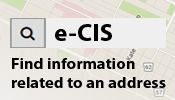Stop Signs
4-Way stop signs
All-Way stop control is NOT a speed control device.
Many requests received for additional stop signs are related to concerns of speeding. Studies show that stop signs only influence motorists to slow down within approximately 30 metres before and after the stop sign and that speeds actually increase at mid-block locations to the original speeds and often higher as drivers attempt to make up for lost time.
All-Way stop control does not reduce traffic volumes.
Before and after studies show that Stop signs have little or no impact on vehicle volumes.
Unwarranted stop signs result in unacceptable levels of Stop sign non-compliance and breeds disrespect for ALL traffic signs.
Stop sign compliance studies show that when all-way stop control was installed but not warranted, an average of 68% to 95% of the motorists approaching the intersection do not come to a complete stop. In general, if people see no reason for the stop sign, they disrespect the sign. Excessive unwarranted stop sign usage breeds disrespect for all traffic signs. Inappropriate signs become part of the landscape and their effectiveness is reduced.
All-way stop control does not always increase safety/reduce collisions at an intersection.
Disregard and disrespect of stop signs by the motorist may decrease safety. Pedestrians may be lured into a false sense of security by the presence of a stop sign by assuming that motorists will stop. Young children who are brought up to believe that people obey laws are the most vulnerable victims. Other motorists may also assume a motorist will stop because of the presence of the sign and enter the intersection when it is not safe to do so, thus resulting in the potential for a collision.
All-way stop control may reduce the number of right-angle and left with opposing through collisions. However, there is a potential increase in the number of rear-end and fixed object collisions, especially if there is a high volume of traffic being required to stop unnecessarily.
Unwarranted Stop signs result in noise and air pollution and fuel consumption.
Residents living nearest the intersection experience an increase in traffic noise resulting from vehicles stopping and accelerating (tire noise and engine noise). Stopping and accelerating also increases environmental emissions and fuel consumption.
Proper use of All-Way Stop Control
The purpose of all-way stop control (3-way or 4-way) is to assign right-of-way to traffic approaching an intersection. Stop signs should only be used where an engineering analysis indicates the usage of stop signs is warranted. The following aspects are considered:
- Traffic Volume – All-way stop control may be recommended where there are large traffic volumes (vehicles and pedestrians) approaching the intersection from all directions and the volume of traffic approaching from each street is close to being equal.
- Collision History – All-way stop control may be recommended where there is a high incidence of right angle and/or left with opposing through collisions.

